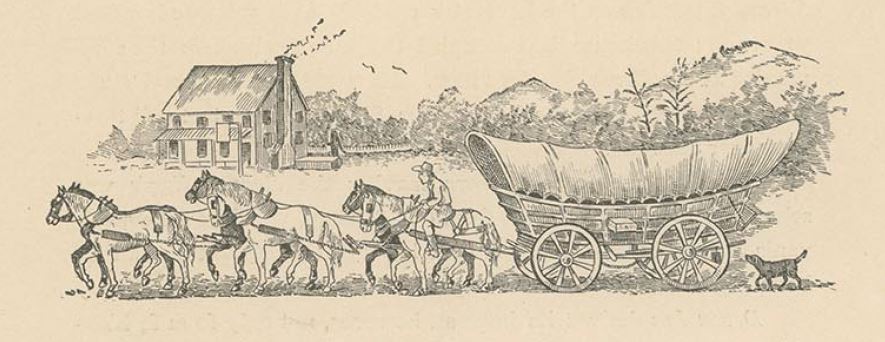 |
|
Tredyffrin Easttown Historical Society Home
: Document Collection Home
Use the links at the left to return.
|
|||||||||
Document Collection |
|||||||||
Devon and its Historic Surroundingsby Julius Sachse
| |||||||||
| |||||||||

The frontpiece, copied from a rare old picture, represents the Spread Eagle Inn on the Lancaste roadside as it was one hundred years ago; this house then occupied the same position in the community as the Devon Inn does now. Its reputation for good cheer was wide spread, and the host, Adam Siter, was known to all travelers over the road. The fast mail coach shown leaving the Spread Eagle was scheduled to reach town in from 6 to 8 hours, while now the Pennsylvania Railroad trains land us in the heart of the city within half an hour. Devon Inn derives its interest, however, not only from fashionable patronage, convenience and perfect appointments, but from the historic associations of the picturesque hills and valleys round about it; records which reach from the earliest days of the Province, through the darkest days of the Revolution, down to the present time. Every road passes over historic ground, every path has its legend, and each old house its own traditions. The Inn and its surroundings are located within the bounds of the old Welsh Tract of 40,000 acres granted as early as 1681, by Penn to the hardy Welsh, who were to have exclusive jurisdiction over it, and did until Penn repudiated the grant - and one of the oldest landmarks is the former Welsh church at Radnor, one and one-half miles south of the Inn. This quaint sanctuary, of which an illustration is shown on the next page has, since the publication of Longfellow’s Poem in 1876, became known to all visitors as “Old St. David’s.” It was long presided over by the venerable Rev. Wm. F. Halsey, and is located in a little valley at the point where the townships of Newtown, Easttown, and Radnor meet, the county line of Chester and Delaware, dividing the churchyard. The quaint building proper dates from 1715, while the unique outside stairway was erected in 1773. Nothing of the old church remains, however, except the outside walls, all the interior fittings being modern. The old pulpit, chancel and high-backed “Pughs” long since succumbed to the demands of modern needs. 
In the surrounding God’s Acre, rest the remains of Gen. Anthony Wayne, whose monument was the first public memorial placed over any of the Revolutionary heroes; directly in front of the door repose the mortal remains of the aristocratic William Moore, of Moore Hall, and by his side lies his wife, a lineal descendant of the Macduff immortalized by Shakespeare; while in front of the chancel window sleeps the pious Currie, for half a century in charge of the three churches comprising “Ye Mission of Radnor.” A host of lesser actors, who were prominent in our early struggles, warriors who wore the British scarlet, as well as those who graced the buff and blue, here mingle their ashes under Radnor’s sod and periwinkle. |